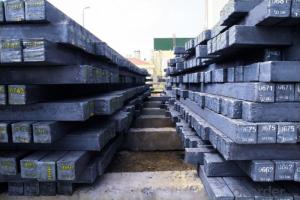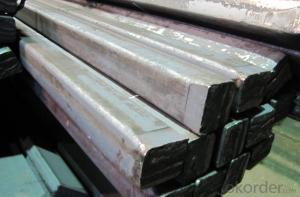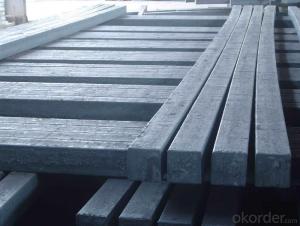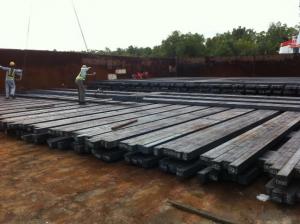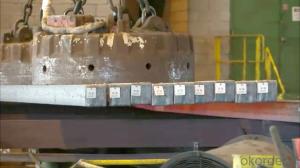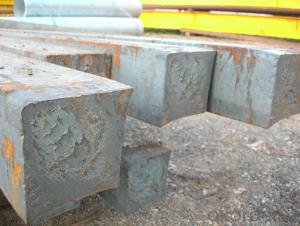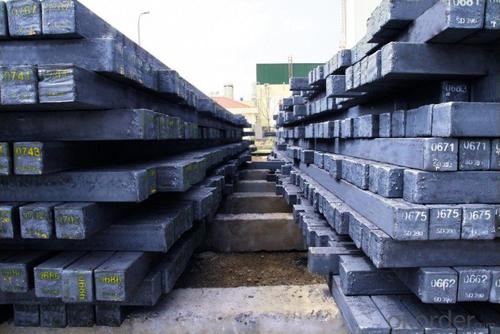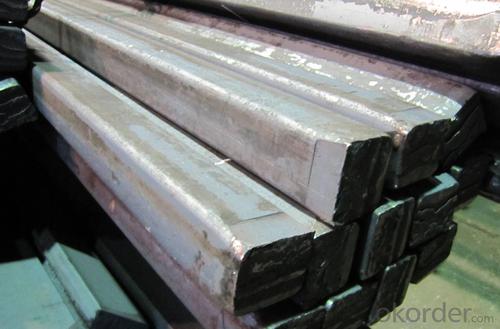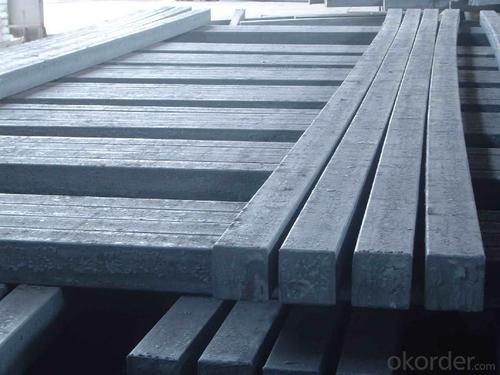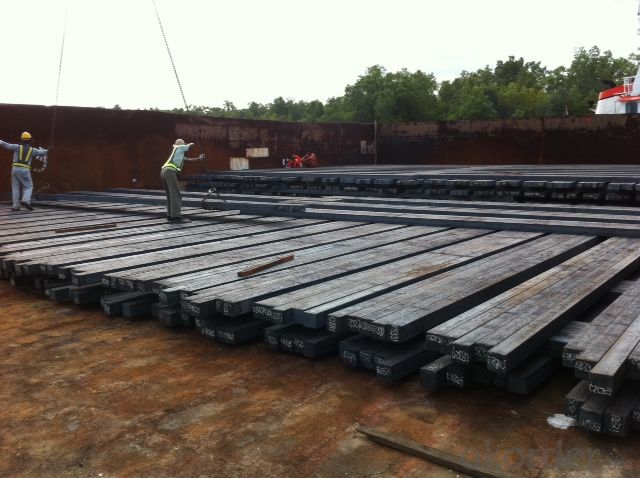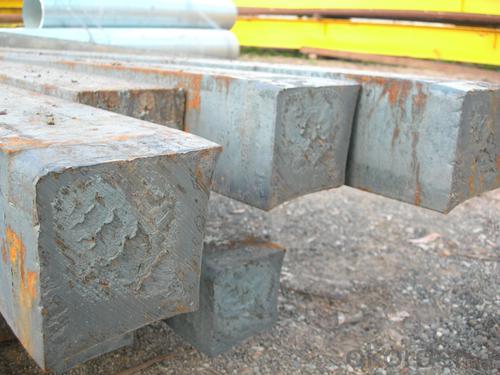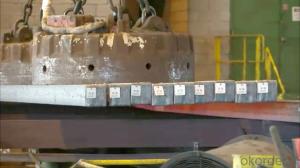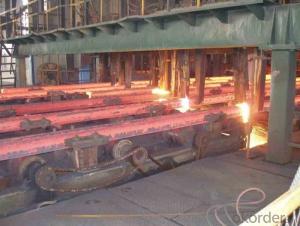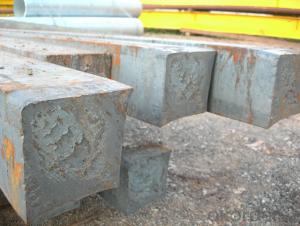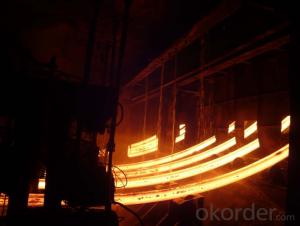Hot Rolled Square Steel Billet 3SP Standard 165mm
- Loading Port:
- Shanghai
- Payment Terms:
- TT OR LC
- Min Order Qty:
- 2000 m.t.
- Supply Capability:
- 10000 m.t./month
OKorder Service Pledge
OKorder Financial Service
You Might Also Like
Structure of Hot Rolled Square Steel Billet 3SP Standard 165mm
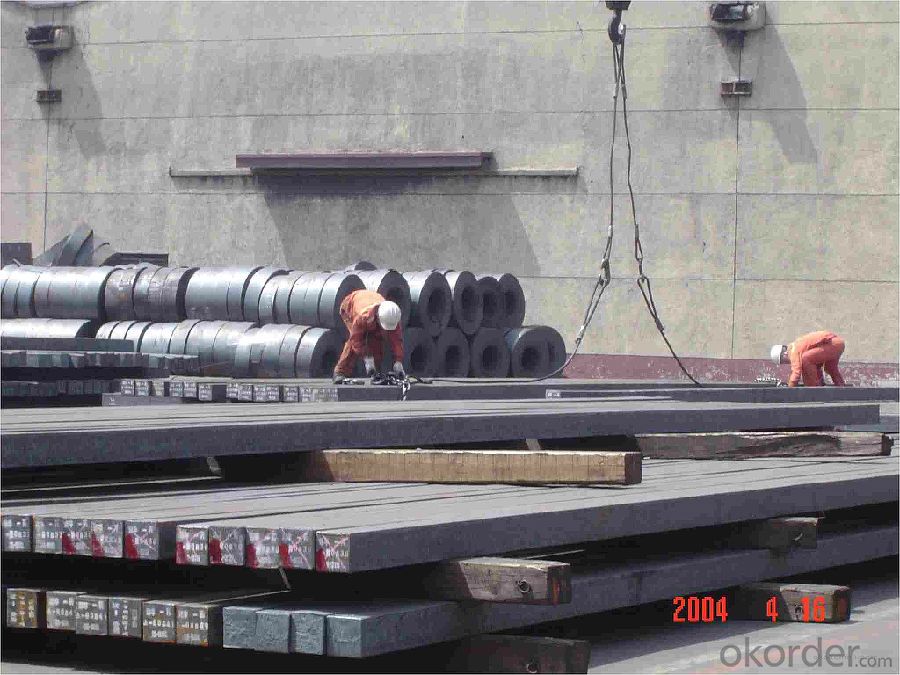
Description of Hot Rolled Square Steel Billet 3SP Standard 165mm
PPGI is made by cold rolled steel sheet and galvanized steel sheets as baseplate, through the surface pretreatment (degreasing, cleaning, chemical conversion processing), coated by the method of continuous coatings (roller coating method),
and after roasting and cooling. Zinc coating: Z60, Z80, Z100, Z120, Z180, Z275, G30, G60, G90
Alu-zinc coating: AZ60, AZ80, AZ100, AZ120, AZ180, G30, G60, G90
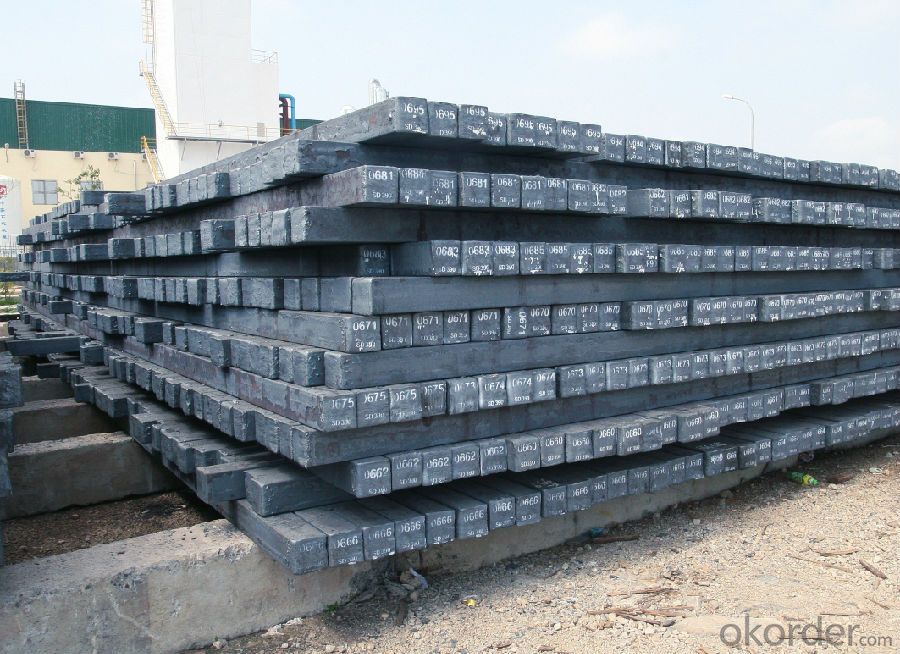
Main Feature of Hot Rolled Square Steel Billet 3SP Standard 165mm
1) Excellent corrosion resistance: The zinc layer provides a good protection of Pre-painted Galvanizeed Steel Sheet.
2) High heat resistance: The reflective surface of the material aids in efficiently reflecting the sunlight away and in turn reducing the amount of heat transmitted. The thermal reflectivity converts into energy savings.
3) Aesthetics: Pre-Painted Galvanized steel sheet is available in plethora of patterns and multiple sizes as per the requirements that given by our customers.
4) Versatility: can be used in the various areas.Standard seaworthy export packing: 3 layers of packing, inside is kraft paper, water plastic film is in the middle and outside GI steel sheet to be covered by steel strips with lock, with inner coil sleeve.
Applications of Hot Rolled Square Steel Billet 3SP Standard 165mm
1) Automotive bodies: filters, fuel tanks, etc.
2) Construction materials: roofings, welding pipes,
3) Electric and electronic appliances: computer cans, etc.
4) Steel cans: containers, etc.
5) Steel furniture: washing machines, refrigerators, microwaves, etc.
6) Drums
7) Office equipment: printer, recorders, etc.
8) Motors and transformers
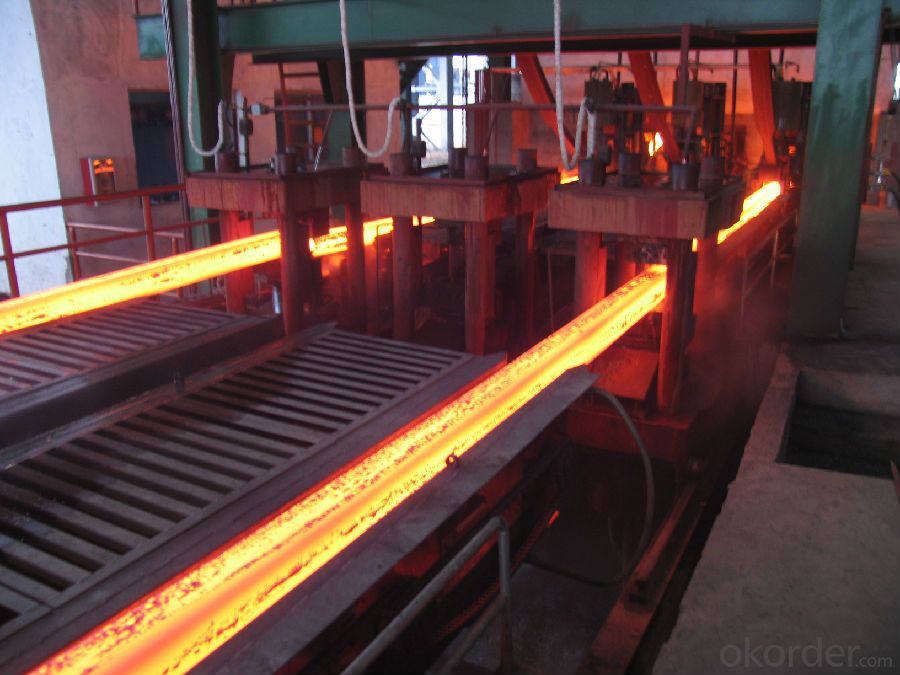
Specifications of Hot Rolled Square Steel Billet 3SP Standard 165mm
| Classified symbol | Yield Point Minimum N/mm2 | Tensile Strength Minimum | Elongation Minimum % | Application | ||||
| N/mm2 | Nominal Thickness mm (t) | |||||||
| JIS | Yogic | 0.25-0.4 | 0.4-0.6 | 0.6-1.0 | 1.0-1.6 | |||
| G3312 | specification | |||||||
| CGCC | CGCC | -205 | -270 | -20 | -21 | -24 | -24 | Commercial |
| CGCD | CGCD | --- | 270 | --- | 27 | 31 | 32 | Drawing |
| --- | CG340 | 245 | 340 | 20 | 20 | 20 | 20 | Structural |
| CGC400 | CG400 | 295 | 400 | 16 | 17 | 18 | 18 | Structural |
| CGC440 | CG440 | 335 | 440 | 14 | 15 | 16 | 18 | Structural |
| CGC490 | CG490 | 365 | 490 | 12 | 13 | 14 | 16 | Structural |
| CGC570 | CG570 | 560 | 570 | --- | --- | --- | --- | Structural |
| ASTM Designation | Yield Point Minimum | Tensile Strength Minimum | Elongation Minimum % | Application | Q/BQB 445-2004(China standard) | ASM A653/A653M | JISG 3312 | |
| ksi(MPa) | ksi(MPa) | TDC51D+Z | (CS TYPE A+Z) | CGCC | ||||
| A653(M)-99 CS TYPE A,B,C | --- | --- | --- | Commercial | TDC52D+Z | CGCD | ||
| A653(M)-99 FS | --- | --- | --- | Lock Forming | TS250GD+Z | (G250+Z) | - | |
| A653(M)-99 DS | --- | --- | --- | Drawing | TS300GS+Z | (G300+Z) | CGC 400 | |
| A653(M)-99 SS Grade33(230) | 33(230) | 45(310) | 20 | Structural | TS350GD+Z | (G350+Z) | CGC490 | |
| A653(M)-99 SS Grade37(255) | 37(255) | 52(360) | 18 | Structural | TS550GD+Z | (G550+Z) | CGC570 | |
| A653(M)-99 SS Grade40(275) | 40(275) | 55(380) | 16 | Structural | ||||
| A653(M)-99 SS Grade50(345) | 50(345) | 65(450) | 12 | Structural | ||||
| A653(M)-99 SS Grade80(550) | 80(550) | 82(570) | --- | Structural | ||||
FAQ of Hot Rolled Square Steel Billet 3SP Standard 165mm
We have organized several common questions for our clients,may help you sincerely:
1. How Can I Visit There?
Our company is located in Tianjin City, China, near Beijing. You can fly to Tianjin Airport Directly. All our clients, from home or aboard, are warmly welcome to visit us!
2. How Can I Get Some Sample?
We are honored to offer you sample.
3. Why choose CNBM?
1, ISO, BV, CE, SGS approved.
2, Competitive price and quality.
3, Efficient service team online for 24 hours.
4, Smooth production ability(50000tons/month) .
5, quick delivery and standard exporting package.
6, Flexible payment with T/T, L/C, Paypal, Kunlun bank, etc.
- Q: Can steel billets be used in the production of railway tracks?
- Certainly! Steel billets have the capability to be utilized in the fabrication of railway tracks. Known as semi-finished goods, steel billets are commonly employed in the production of a wide range of steel items, including railway tracks. Due to the heavy weight and movement of trains, railway tracks necessitate remarkable strength and durability. Steel billets, typically composed of carbon steel or alloy steel, offer the required strength and structural integrity indispensable for railway tracks. These billets can undergo further processing and shaping through hot rolling or alternative manufacturing methods to transform into rails. Once the final rails are ready, they are installed onto the railway tracks, providing a safe and smooth surface for the movement of trains. Consequently, steel billets are an indispensable raw material in the manufacturing of railway tracks.
- Q: How are steel billets used in the manufacturing of railway wagons?
- Steel billets are used in the manufacturing of railway wagons as they serve as the raw material for various components such as frames, side panels, and undercarriages. These billets are first heated and then shaped into the desired form through processes like rolling or forging. The resulting components are strong, durable, and able to withstand the rigorous demands of railway transportation, ensuring the safety and reliability of the wagons.
- Q: How are steel billets prepared for further processing?
- Steel billets go through a series of steps to prepare them for further processing. These steps include heating, shaping, and cooling. The initial step in the preparation process involves heating the steel billets in a furnace to a specific temperature known as the reheat temperature. This temperature is essential as it makes the steel billets malleable and easier to shape. Once the billets reach the reheat temperature, they are transferred to a shaping machine, usually a rolling mill. The rolling mill applies pressure to the heated billets, causing them to undergo plastic deformation. Depending on the desired end product, the rolling mill can shape the steel billets into various forms such as bars, rods, or sheets. After shaping, the steel billets are rapidly cooled through a process called quenching. Quenching helps to harden the steel and improve its overall strength and durability. The cooling method can differ based on the specific requirements of the steel, with options such as air cooling, water quenching, or oil quenching. Once the billets have been shaped and quenched, they may undergo additional processing steps like surface treatment or further heat treatments. These processes, such as galvanizing, tempering, or annealing, help achieve specific properties or surface finishes. In summary, the preparation of steel billets for further processing involves heating them to a reheat temperature, shaping them using a rolling mill, quenching them for hardening, and potentially undergoing additional treatments to meet specific requirements. These steps are vital in ensuring that the steel billets are ready for their intended applications in various industries.
- Q: What are the different methods of shaping steel billets?
- There are several methods of shaping steel billets, including hot rolling, cold rolling, forging, extrusion, and casting. Each method involves different techniques and processes to shape the steel billets into desired forms and dimensions.
- Q: How are steel billets used in the production of reinforcing bars?
- Steel billets are an essential component in the production of reinforcing bars. These billets, which are semi-finished steel products, serve as the raw material for the manufacturing process. To produce reinforcing bars, the steel billets are heated to a specific temperature in a furnace. This heating process helps to improve the malleability of the steel, making it easier to shape and manipulate. Once the billets have reached the desired temperature, they are then passed through a series of rolling mills. These mills apply significant pressure to the billets, gradually reducing their size and shaping them into the required dimensions for reinforcing bars. The rolling process also helps to improve the mechanical properties of the steel, enhancing its strength and durability. After the rolling process is complete, the now elongated steel bars are cut into specific lengths according to the desired dimensions and requirements. These lengths are then allowed to cool, which helps to stabilize the steel and prevent any deformations. Finally, the reinforcing bars undergo a surface treatment process, such as hot-dip galvanization or epoxy coating, to provide corrosion resistance and improve their longevity. This treatment further enhances the performance and lifespan of the reinforcing bars, making them suitable for use in construction projects. In summary, steel billets are used as the starting material in the production of reinforcing bars. Through a series of heating, rolling, cutting, and surface treatment processes, the billets are transformed into high-strength steel bars that provide reinforcement to concrete structures.
- Q: How can steel billets be customized for specific applications?
- Steel billets have the potential to be tailored to specific applications using a variety of techniques and processes. One commonly used method involves subjecting the billets to controlled heating and cooling cycles, known as heat treatment, in order to modify their mechanical properties. This can involve processes like annealing, quenching, tempering, or normalizing, which can help achieve desired levels of hardness, toughness, or ductility. Another way to customize steel billets is through alloying, which involves adding specific elements like chromium, nickel, or molybdenum to the steel composition. This enhances the properties of the billets to meet the requirements of different applications. For instance, adding chromium can improve corrosion resistance, while nickel can enhance strength and toughness. Moreover, the shape and size of steel billets can be customized. Depending on the intended use, billets can be cast into various shapes such as round, square, or rectangular, to better suit their purpose. Additionally, the dimensions of the billets can be adjusted to specific requirements, allowing for more efficient processing and minimizing material waste. Surface treatments can also be applied to steel billets to further customize them for specific applications. These treatments, including shot blasting, pickling, or coating, improve the surface finish, remove impurities, and provide protection against corrosion. Overall, the customization of steel billets for specific applications involves a combination of heat treatment, alloying, shaping, and surface treatments. Through these processes, the mechanical properties, composition, shape, and surface characteristics of the billets can be fine-tuned to meet the specific requirements of different industries and applications.
- Q: What are the main challenges in sourcing steel billets?
- There are several main challenges in sourcing steel billets. Firstly, one of the key challenges is ensuring a consistent and reliable supply of high-quality steel billets. Steel billets are typically sourced from steel mills or manufacturers, and it is crucial to find suppliers that can consistently meet the required specifications and standards. This involves conducting thorough research and due diligence to identify reputable and reliable suppliers who have a track record of producing high-quality billets. Another challenge is managing the cost and price fluctuations of steel billets. Steel prices are subject to various factors such as global demand, raw material costs, and market dynamics. As a result, the price of steel billets can be volatile, which can impact procurement decisions and budgets. Sourcing professionals need to carefully monitor market trends and negotiate pricing contracts to ensure the best value for their organization. Furthermore, logistics and transportation can pose challenges in sourcing steel billets. Steel billets are heavy and bulky, making transportation and logistics complex. Coordinating deliveries, managing shipping schedules, and ensuring timely arrival of the billets can be challenging, especially when sourcing from international suppliers. It is important to work closely with reliable logistics partners and have a robust supply chain management system in place to overcome these challenges. Quality control is another crucial aspect in sourcing steel billets. Due to the critical nature of steel in various industries, it is essential to ensure that the billets meet the required quality standards. This involves conducting quality inspections, reviewing certifications, and performing material testing to verify the integrity and properties of the billets. Regular audits and inspections should be conducted to maintain consistent quality throughout the sourcing process. Lastly, regulatory compliance and trade restrictions can present challenges in sourcing steel billets. Import/export regulations, tariffs, and trade barriers can impact the availability and cost of steel billets from certain regions. Sourcing professionals need to stay updated with the latest regulations and trade policies to navigate these challenges and ensure compliance with the applicable laws. In conclusion, the main challenges in sourcing steel billets include ensuring a consistent supply of high-quality billets, managing price fluctuations, handling logistics and transportation, maintaining quality control, and complying with regulatory requirements. Overcoming these challenges requires careful supplier selection, effective negotiation, robust supply chain management, and staying informed about market trends and regulations.
- Q: How are steel billets used in the manufacturing of gears and bearings?
- Steel billets are used in the manufacturing of gears and bearings as they serve as the raw material for forging or casting processes. These billets are heated and shaped into the desired form, such as gear blanks or bearing races, using specialized machinery. The high strength and durability of steel make it an ideal material choice for these applications, ensuring the gears and bearings can withstand heavy loads and provide smooth operation.
- Q: Can steel billets be used in the production of energy infrastructure?
- Certainly, energy infrastructure can be produced using steel billets. Steel is extensively utilized in the construction of various energy infrastructure components, including power plants, transmission towers, pipelines, and wind turbine towers. By further processing and shaping semi-finished steel products known as steel billets, the required forms for these infrastructure projects can be achieved. The durability, strength, and versatility of steel make it well-suited for withstanding the demanding conditions and heavy loads associated with energy infrastructure. Moreover, steel provides excellent resistance against corrosion, which is of utmost importance for infrastructure exposed to the elements. In summary, the use of steel billets plays a crucial role in the production of energy infrastructure, ensuring the reliable and efficient generation, transmission, and distribution of energy.
- Q: What are the common surface defects found in steel billets?
- Some common surface defects found in steel billets are scale, cracks, laps, seams, and surface decarburization.
Send your message to us
Hot Rolled Square Steel Billet 3SP Standard 165mm
- Loading Port:
- Shanghai
- Payment Terms:
- TT OR LC
- Min Order Qty:
- 2000 m.t.
- Supply Capability:
- 10000 m.t./month
OKorder Service Pledge
OKorder Financial Service
Similar products
Hot products
Hot Searches
Related keywords
